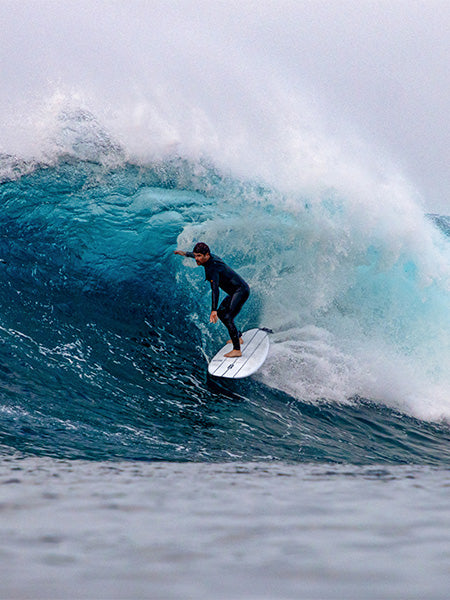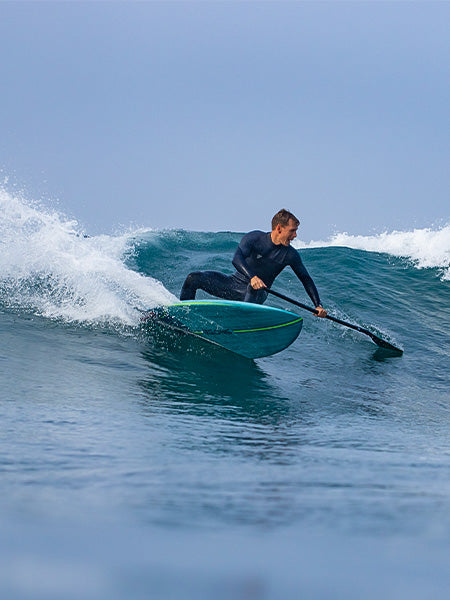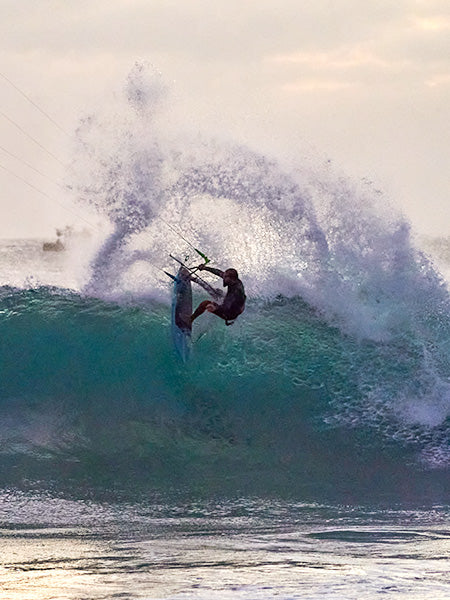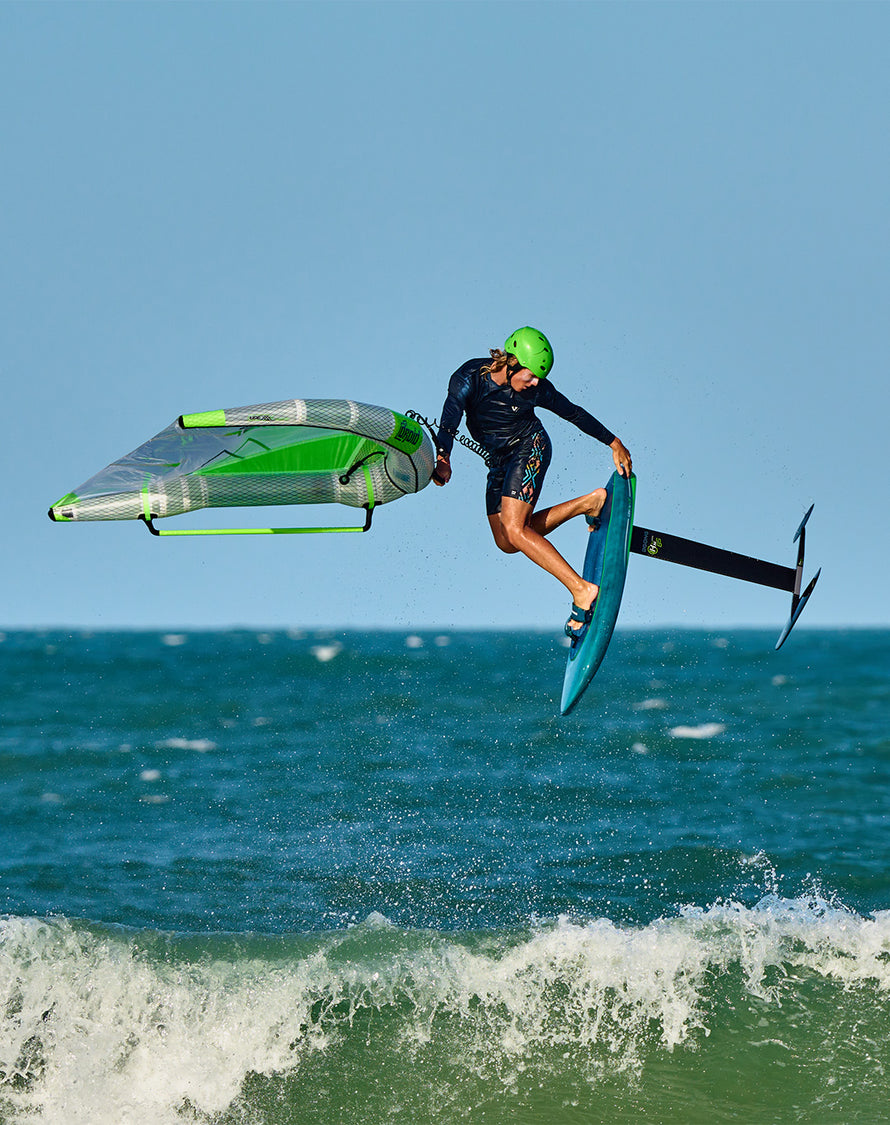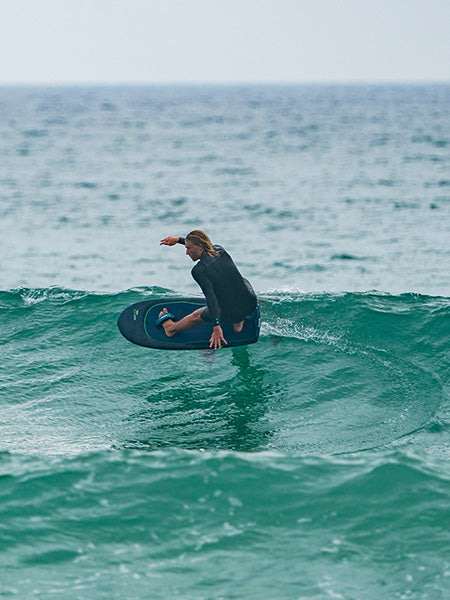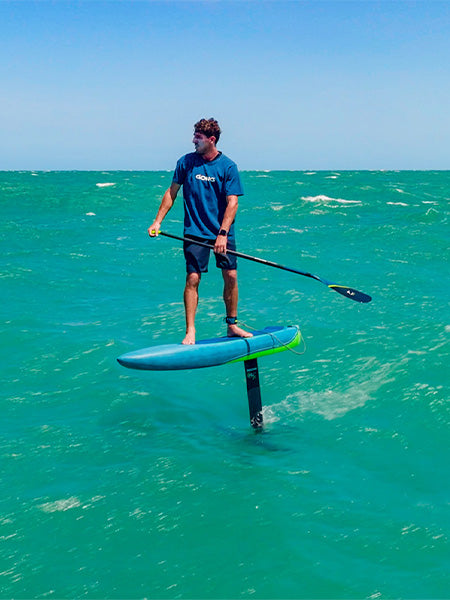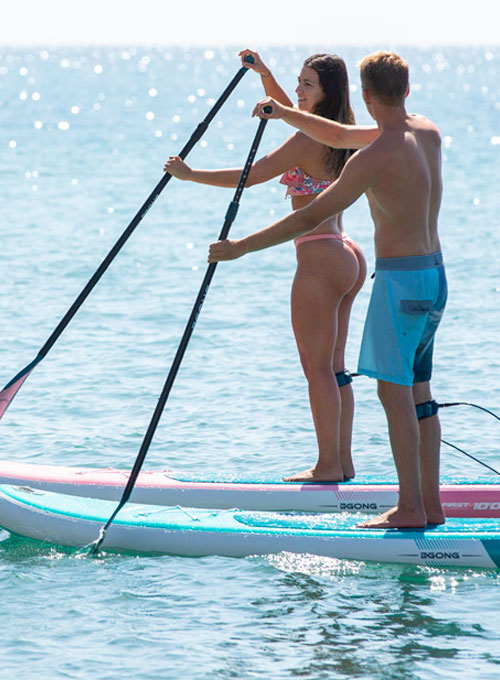Choose your surf leash
Back
Cord Length:
The lengths announced by the manufacturers are, in general, directly related to the length of the cord. When you add the plug attachment (with its cord) and the strap with the Rail Saver, you can easily add on 30cm more. It’s a good margin for security because as a general rule we tend to advise that the Leash be a bit longer than the Board. So, a 9’ Leash on a 9’ Board will have a dozen or so more cm. Gives you something to think about if you got the Nose attitude ;-))).
Make note that this length will also be stretched out in bigger waves, you can even break it. At the end of a session your leash could easily be a whole meter longer than what it stated on the packing!
Finally, in the Big stuff, we tend to use longer Leashes so we have a little margin. Useful for when you need to dive deep and also for making it back to the top if the Board is being held down..etc…
Cord Diameter:
A Leash is as close as it gets to a brake. The drag that is derived form it can be quite strong.
In big waves, we don’t really care. In smaller ones, it can be a handicap. But that is the price you pay for your security and that of others.
We can get the habit of using a leash that is shorter and thinner in smaller waves to keep the drag down. Attention, thinner means more fragile as well. Once it starts getting pulled on and stretched out the risk of snapping is greater.
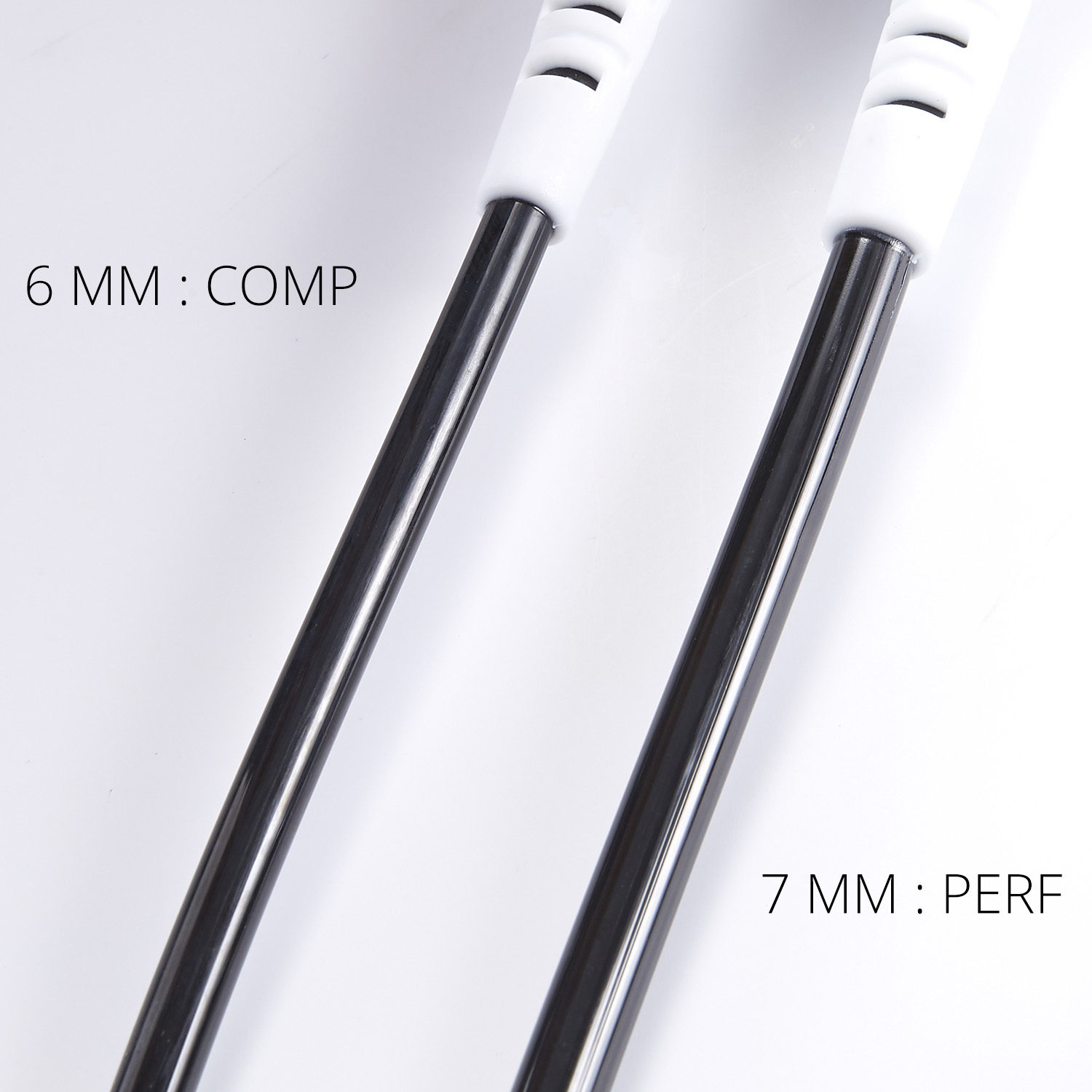
Cord Material:
More or less stretch, foldable, there’s types for everybody. Some like hard Leashes, others soft and supple ones….
Make note that some float. Which is very practical on spots where there is coral and rocks are within reach of the Leash. If it’s sinking to the bottom it can get stuck and/or worse cut up by sharp rocks/coral and break very easily after.
The Attachment:
Make sure it is comfortable and secured.
Put the Leash on and strap it down tightly. Pull on the cord at a 90° angle from its connection point. If you don’t feel a hard point against your ankle your good. If you feel a hard point due to the reinforcements of the cord attachment, don’t buy it. A good Leash will never hurt your ankle.
Inspect the surface that comes into contact with your skin. A surface that irritates will be a nightmare and not only hurt your skin but also damage your wetsuit! Be careful, a slippery surface can also be unpleasant because the Leash turn inside out, the slicer they are the more fragile.
Pay attention to the closure system. Do away with complicated systems that you can’t easily release instinctually in case of a problem. Stick with simplicity.
Take an attachment sized for you. Not all Leashes are sized the same, even if in principle they’re made to fit everybody, in practice a Leash that’s too big or to small that can’t be well adjusted is going to be hard to deal with. If it’s too small, it can get ripped off the first time there is tension on it. Too big and you’ll have too much material around your leg and it will bunch up and irritate you, especially with too much Velcro.
Keep an eye on wear after a few months of use. If your Velcro is balling up, it’s time to get another Leash.
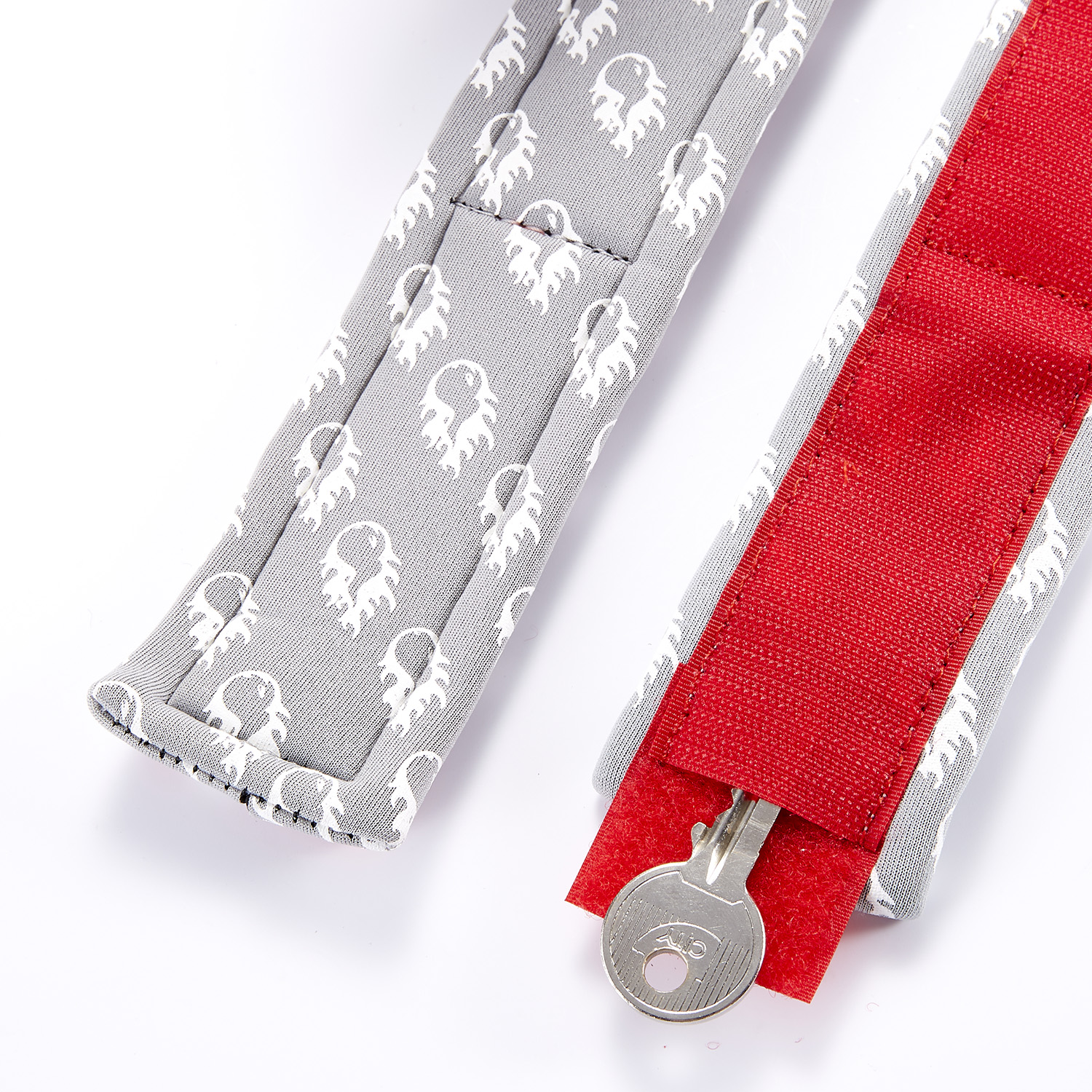
Type of Attachment:
An Ankle Leash is usually the most comfortable in real waves. It is preferred to have it facing the back but the loop it forms is much smaller than that of a Knee Leash so it will have less tendency to get caught up in your SUP Paddle.
In heavy waves, some people prefer getting pulled by their ankle.

A Knee Leash allows you to get the Board back in your hand faster because you don’t have so far to reach to grab the Leash. So, you can get over the bar faster. It also stays out of the way when you’re cross stepping the Board.
On the other hand, if it’s not placed behind the knee that the Paddle can get caught up in the loop that forms in the back and that can be annoying. It needs to be attached correctly and firmly.

The Rail Saver:
This flat part of the strap doesn‘t only act as an attachment point for the Leash to the Board. It is specially designed to lay flat on the rail of your Board and avoid the Leash from actually cutting through and entering the Board which can happen if the Board gets flipped and caught up in a heavy wave.
Attention : the cord between the Plug and the Rail Saver should be as short as possible, if not it as well can cut through the tail!!! This loop that is formed should always be shorter than the distance from the plug to the closest rail. Always make sure that these parts are in perfect working order.
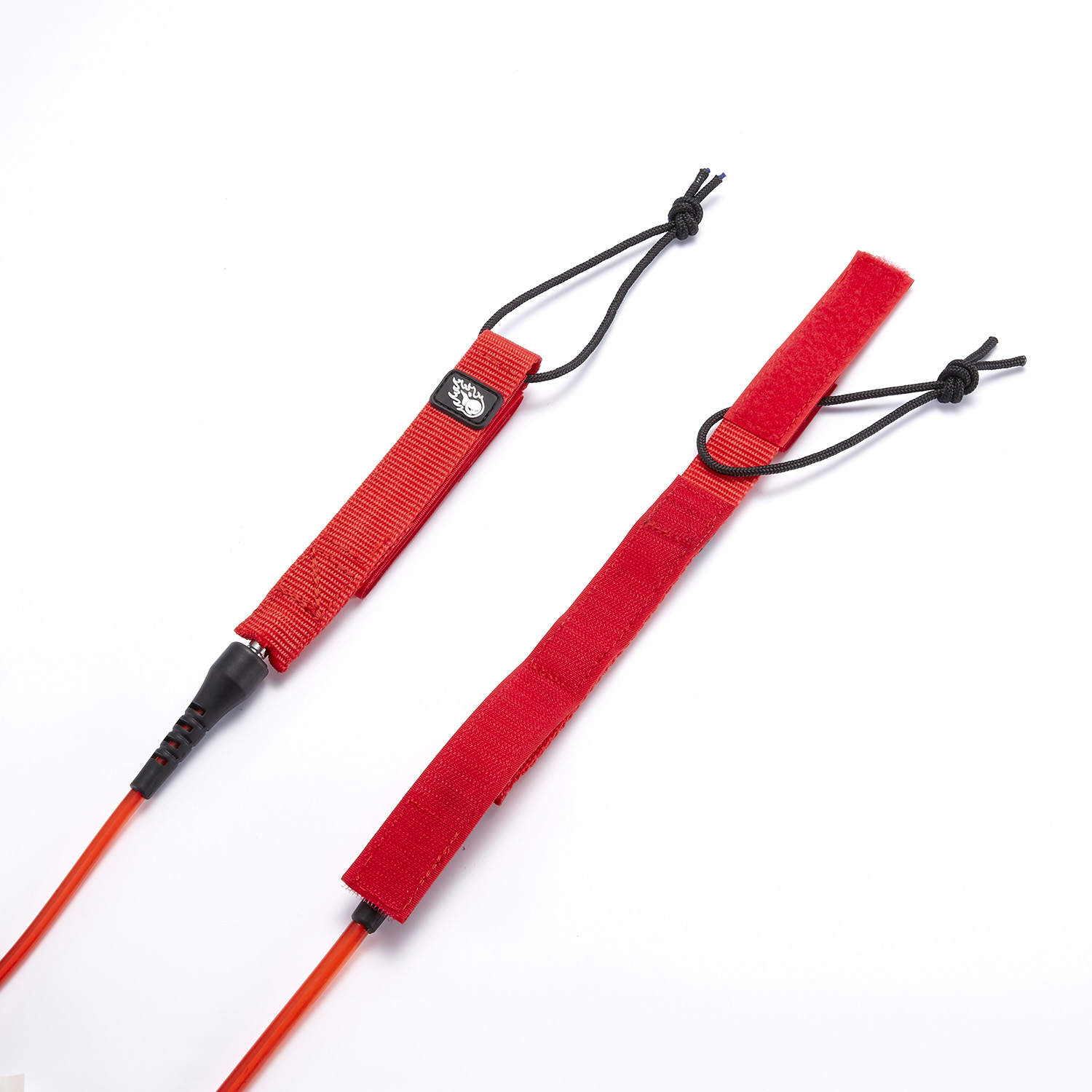
The Swivel Assembly:
There’s nothing worse than a Leash that’s gets twisted up and curls like a pigs tail.
To resolve this the swivel system will de- twist any problems and you’ll be able to surf hassle free. It is best to have one at both connection points, the Rail Saver and Strap.
To avoid loops forming in your Leash do not wrap it around the tail of your Board. It will take this form when it’s in the water and constantly be getting caught up in your feet.
This is the worst. Store it straight and without any kinks.
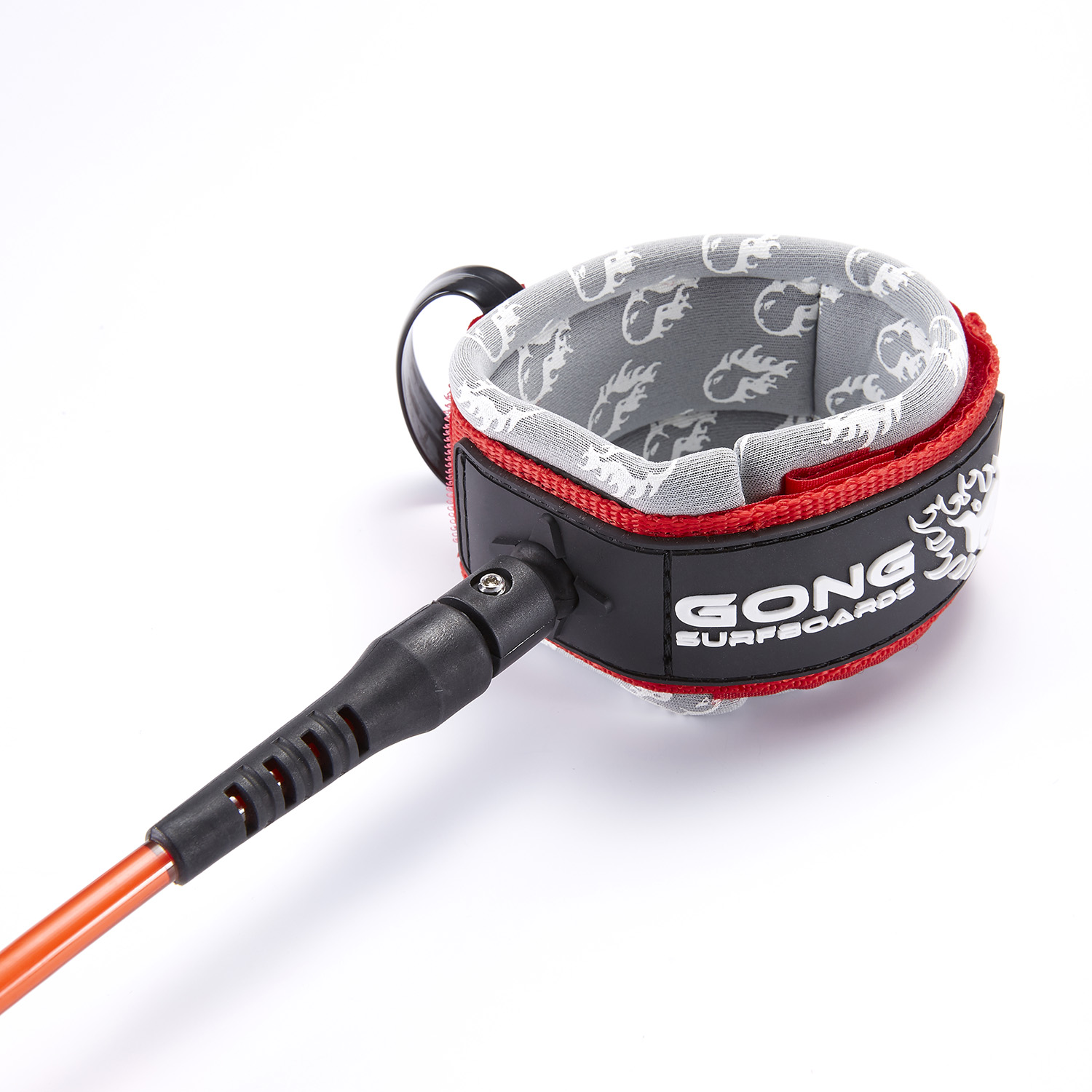
Upkeep:
WE must add to what has already been said that a Leash should be rinsed after use and take care to remove all sand and algae from the Velcro.
Finally, be sure to inspect it thoroughly and as often as possible. Slide it through your fingers and check for cuts, cracks and abrasions. At the slightest sign of damage, throw it away and get a new one. It is made for your security and that of others.
Leashes are to be changed every year. Even if not used often the cord will lose its finer qualities rapidly.
Conclusion:
Everyone has their opinion and feeling on the issue, the best rule is to be based off good habits, the rest is just personal opinion.
Mounting:
L’Ours reflects on an important question: How to choose your Leash?
“One must first remember that the length size given by the manufacturer shouldn’t be relied upon:
- The length of the attachment.
- The length of the Rail Saver, close to 30cm (one foot) !!!
- The advanced plug position on the Board.
- Leash stretching.
For all these reasons, I systematically use a leash that, once attached to me, allows me to get to my Hang Ten position without difficulty ; this goes for Boards with round noses and in all reasonable sized waves.
For Point Nose Boards, ones that we are almost static, I use a Leash that is smaller, by one foot, of the Board I’m using in small waves and for heavy waves a Leash that is exactly the Board size.
I never you use a long Leash. Why? Because even in double overhead a long Leash is a brake and for paddling it’s a nightmare.
Reason #2 : a Long leash will have you losing time when you’re trying to recuperate your Board, and when trying to get over a bar in heavy waves this will be frequent.
A short Leash will insure that you get your Board back quick. It’s simply just a question of time unfortunately.
But it still gets you back out faster.
For you to see,
Thanks”
Check the GONG Forum to read what is said about this topic.
